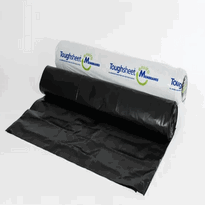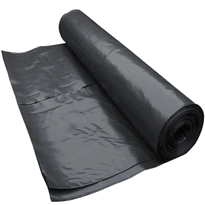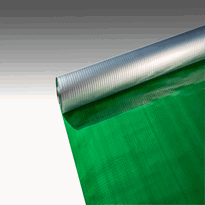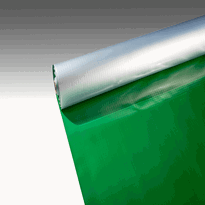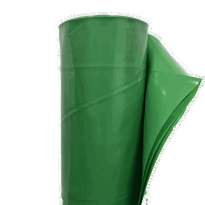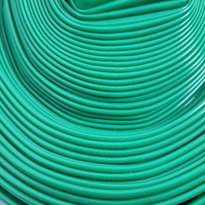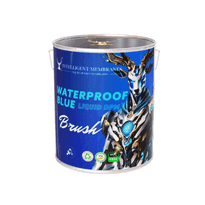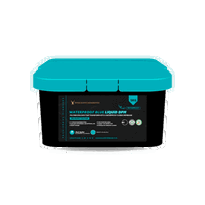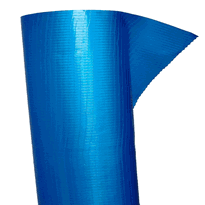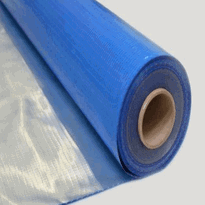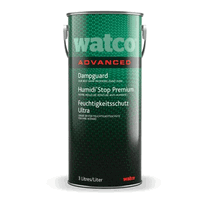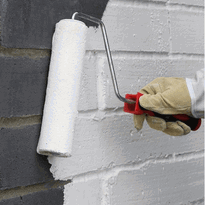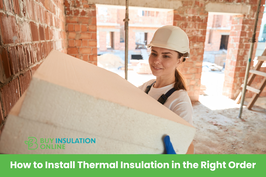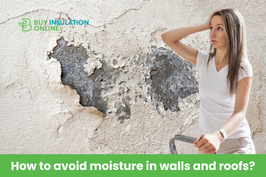Wet Room Insulation Board
Wet room insulation boards are specially designed to manage moisture while providing effective thermal insulation. Common materials include extruded polystyrene (XPS), polyurethane, and mineral wool. Each type offers unique advantages, such as water resistance and fire safety features.
Proper installation is crucial, ensuring longevity by preventing water ingress and minimising heat loss. When selecting the appropriate insulation board, consider factors such as moisture resistance, thermal performance, and compliance with safety standards.
Understanding these key elements will help you achieve optimal insulation and create a durable, long-lasting wet room environment.
Types of Wet Room Insulation Boards
There are various types of wet room insulation boards, each tailored to fulfil specific needs and conditions.
Expanded Polystyrene (EPS) boards are a cost-effective option, offering consistent thermal performance with an R-value around R4 per inch. They're semi-breathable, which aids in drying out trapped moisture.
Extruded Polystyrene (XPS) provides a superior initial R-value of approximately R5 per inch. Being denser, it offers enhanced water resistance, but meticulous installation is crucial to prevent moisture accumulation.
Polyisocyanurate (Polyiso) boards boast the highest R-value, making them ideal for spaces requiring exceptional insulation.
Mineral wool boards prioritize fire safety and breathability, effectively absorbing moisture without compromising their insulating properties.
Graphite polystyrene boards enhance thermal reflectivity while being environmentally considerate.
Each type of insulation board is designed to cater to different project requirements in wet room settings, ensuring optimal performance and longevity.
Moisture Resistance and Suitability
Moisture resistance is crucial in assessing the performance of insulation boards in wet room environments. Well-designed boards provide essential protection against water damage and mould growth. Moisture-resistant plasterboards utilise specialised adhesives that block vapour while allowing air circulation. This design helps to reduce condensation and the risk of mould. Closed-cell foam insulations, such as PIR and XPS, are effective in resisting water infiltration and can maintain their performance when installed correctly. Calcium silicate boards are non-absorbent; however, prolonged exposure to moisture necessitates waterproofing measures to prevent potential damage. Polyiso boards, particularly those with appropriate facers like aluminium, offer a balance between moisture resistance and thermal performance. While moisture-resistant materials play a vital role, it's important to note that they aren't entirely waterproof. Proper sealing and installation are essential to prevent water ingress, making sure that the insulation remains effective over time and helps in maintaining a dry environment.
Thermal Performance of Insulation Materials
Insulation materials used in wet rooms are specifically designed to exhibit low thermal conductivity, which effectively reduces the transfer of heat through walls and floors. This characteristic helps maintain a warm environment while simultaneously lowering energy costs. Thicker insulation boards provide enhanced thermal resistance, with options available to suit various performance requirements. These boards facilitate a quicker response from underfloor heating systems, often achieving warmth in a significantly shorter time compared to spaces without insulation. By minimising heat loss, they contribute to improved overall efficiency and comfort in the room.
Different thickness options allow for tailored solutions based on individual needs, helping to reduce thermal bridging and ensure consistent temperatures throughout the space.
Aspect |
Effect |
| Low thermal conductivity | Reduces heat transfer |
| Thickness variation | Customisable thermal resistance |
| Faster heating response | Improves efficiency |
| Energy savings | Lowers heating costs |
Installation Considerations for Wet Rooms
Proper surface preparation is crucial for a successful wet room installation.
Firstly, the substrate needs to be solid, stable, and free from dust, dirt, oil, or loose materials to ensure good adhesion of insulation boards and waterproof layers.
Secondly, any holes or gaps should be filled with flexible adhesive or self-levelling compounds.
Next, it's important to prime the surface with a diluted primer to enhance bonding.
Additionally, remove any old finishes or damaged plaster to achieve a flat, clean surface.
Uneven areas around wet room trays and drains must also be levelled to maintain the correct slope and prevent water pooling.
These steps create a secure base for affixing water-resistant boards, applying waterproof membranes, and sealing joints, ultimately resulting in a durable, leak-proof wet room.
Health and Safety Factors in Insulation Selection
Choosing the right insulation is crucial for maintaining a healthy indoor environment.
It's important to be aware of any harmful additives that may impact indoor air quality and the health of occupants. During installation, proper handling procedures should be followed to minimise exposure to dust, fibres, or chemicals that can be released from certain insulation materials. Additionally, selecting insulation materials with a proven track record of preventing moisture buildup can significantly reduce the risk of mold and mildew growth in wet rooms. Signs of wet insulation should prompt immediate inspection and action to ensure safety and performance. Selecting insulation that adheres to established safety standards is vital. This ensures that the material isn't only effective but also suitable for use in areas such as wet rooms, where moisture resistance is critical.
Avoid Harmful Additives
To minimise health risks, it's crucial to avoid insulation products that contain harmful additives and chemicals. Many insulation materials, such as spray polyurethane foam, include isocyanates that can irritate the skin, eyes, and lungs, particularly during installation. Additionally, certain foam boards emit volatile organic compounds (VOCs), which may lead to respiratory issues and irritation of the mucous membranes. Harmful flame retardants, including halogenated compounds, are persistent toxins associated with health and environmental hazards. Furthermore, blowing agents like HFCs have a significant global warming potential and can exacerbate climate change. Research indicates that some low-VOC and halogen-free options are now available in the market, making safer choices easier. To safeguard the well-being of the community, it's advisable to select insulation options that are free from these hazardous additives. Look for certified low-VOC products and favour materials that are labelled halogen-free or that utilise safer alternatives for flame retardants.
Proper Handling Procedures
Proper handling procedures for insulation materials are crucial in minimising health risks and ensuring a safe installation process.
It's essential for workers to don protective clothing, including gloves, long sleeves, and eye protection, to shield against skin and eye irritation caused by fibres. Additionally, respiratory masks or respirators are necessary to prevent the inhalation of dust and particulates. Careful handling of insulation boards is paramount; workers should avoid cuts and punctures and utilise suitable tools for cutting. Providing training on safe handling techniques helps to reduce exposure and prevents damage to materials. Adhering to the manufacturer’s safety data sheets and handling instructions is vital for compliance with occupational health standards. Furthermore, disposing of waste in accordance with local regulations is important to prevent environmental contamination. Proper handling not only safeguards health but also ensures that the insulation performs effectively, contributing to a safe and comfortable environment. Safe disposal practices are essential to prevent environmental contamination.
Material Safety Standards
Material safety standards play a crucial role in ensuring insulation products are safe for both installers and occupants. These standards address fire safety, chemical safety, and environmental impact to mitigate health hazards. They also establish testing procedures and certification requirements to verify compliance and ensure consistent safety performance across different products and manufacturers. Key considerations include:
Insulation materials must adhere to stringent fire safety regulations, requiring flame-spread ratings that indicate low combustibility for fire-retardant backing.
Cellulose insulation should comply with recognised regulations to ensure flame resistance and minimise corrosiveness.
Foam boards are generally permitted for use without a thermal barrier in certain applications, as they typically meet industry standards for fire safety.
Maintaining proper moisture content in insulation materials, particularly in cellulose, is essential to prevent mould growth and associated health issues, underscoring the importance of effective drying and climate management.
Adhering to these standards fosters the development of safe, reliable, and environmentally conscious insulation solutions for all users.
Durability and Practical Benefits
Wet room insulation boards are designed for longevity, even in areas with consistent moisture exposure. They are resistant to cracking, swelling, and warping, ensuring they maintain their integrity over time. For instance, high-quality tile backer boards can endure for decades when properly maintained. Foam boards, such as extruded polystyrene (XPS), exhibit excellent water resistance, making them particularly suitable for humid environments. Material durability is a key consideration, as these boards must withstand the challenging conditions of wet rooms without deteriorating. Correct installation is crucial; when executed properly, these boards enhance the strength of walls and floors, help to prevent mould and mildew formation, and contribute to lower maintenance costs. They also offer practical advantages, such as ease of handling and the capability to tile directly onto their surface.
The following table outlines some key durability benefits:
Feature |
Benefit |
| Water Resistance | Extends lifespan |
| Structural Integrity | Supports tiles and floors |
| Mould Resistance | Improves indoor air quality |
Tips for Choosing the Right Insulation Board
Choosing the right insulation board for a wet room is crucial to ensure long-lasting performance and durability.
First, assess the thermal performance of the materials available. Polyiso is known for its high thermal resistance, while expanded polystyrene (EPS) provides stable insulation at a more economical price point.
Next, consider moisture resistance. Extruded polystyrene (XPS) and Graphite Polystyrene are both highly resistant to moisture, making them ideal for wet environments. In contrast, mineral wool allows moisture to pass through, which can reduce the risk of mould but may not be suitable for all applications.
It is also important to check compatibility with wet room conditions. The insulation boards must be able to withstand constant moisture and should be compatible with waterproofing systems and tile adhesives to ensure a secure fit. Moisture resistance is a key factor in determining the longevity of insulation in wet rooms.
Finally, think about cost and value. While EPS tends to be more budget-friendly, Graphite Polystyrene may offer enhanced efficiency, albeit at a higher investment.
Conclusion
Choosing the appropriate wet room insulation board is crucial, particularly in the UK, where moisture resistance, thermal performance, and durability are key considerations. By understanding the various types of insulation boards and their specific features, homeowners can ensure proper installation and achieve long-lasting results.
It is essential to adhere to health and safety guidelines to avoid potential issues over time. Evaluating the practical advantages of different insulation options, alongside following expert advice, will empower homeowners to select insulation that effectively meets their needs.
Proper insulation not only enhances energy efficiency but also contributes to maintaining comfort and safety in wet room environments, making it a vital component of any wet room project.
